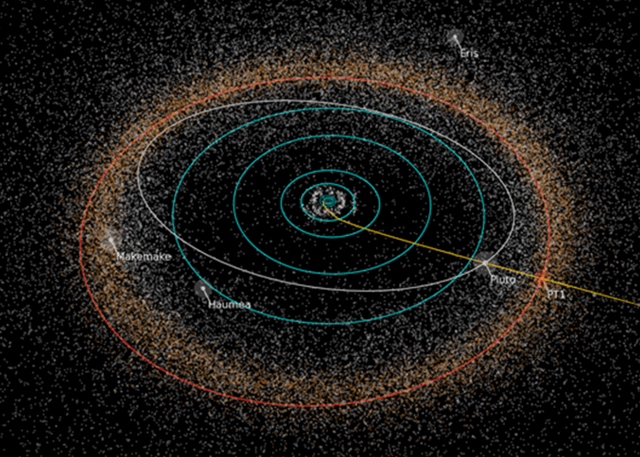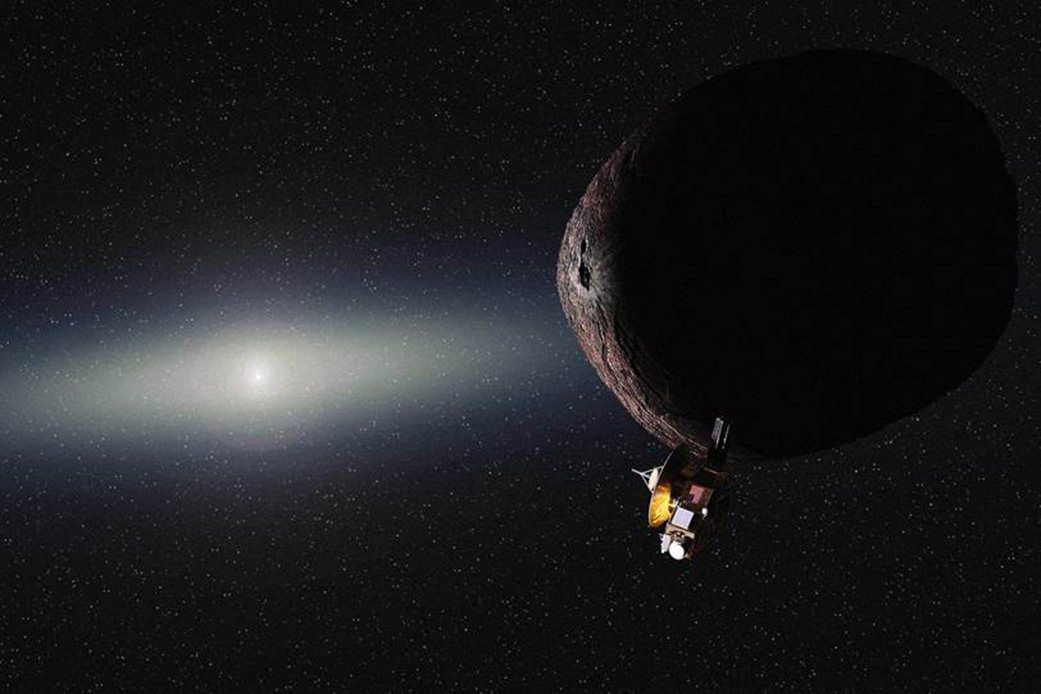NASA and the science team behind the New Horizons mission to Pluto and beyond have settled on the popular choice for the spacecraft’s next flyby: It’s 2014 MU69, an icy object a billion miles beyond Pluto that’s thought to be less than 30 miles (45 kilometers) wide.
That’s 10 times bigger than, say, the comet targeted by the European Space Agency’s Rosetta probe – but on the order of 1 percent as wide as Pluto. The New Horizons team suspects that 2014 MU69 represents a primordial object in the Kuiper Belt, the vast ring of icy material that lies beyond the orbit of Neptune.
Studying such a Kuiper Belt object, or KBO, should satisfy the mission’s post-Pluto objective of documenting the diversity of worlds at the solar system’s edge. “It is just the kind of ancient KBO, formed where it orbits now, that the Decadal Survey desired us to fly by,” New Horizons principal investigator Alan Stern said Friday in a NASA news release.

2014 MU69, also known as Potential Target 1 or PT1, was one of three objects identified after a months-long search that drew upon the observing power of the Hubble Space Telescope. Although an alternate target known as PT3 was somewhat brighter and probably bigger, PT1 was favored because there’s a 100 percent chance of reaching it with the fuel that was left on the New Horizons spacecraft after last month’s big Pluto flyby.
The New Horizons team has planned a series of four maneuvers in October and November to send the piano-sized probe toward 2014 MU69, but NASA won’t be able to give the final go-ahead for the extended mission until the team makes a formal proposal in 2016. If NASA gives the green light, the flyby is due to take place on Jan. 1, 2019.
In the meantime, New Horizons is continuing to send back imagery and other data that have been stored up since it flew past Pluto on July 14. New pictures should be released starting in a week or so.
This month, views from the Pluto flyby were mashed together with animations to produce a glorious time-lapse video. Check out this masterpiece by Southwest Research Institute’s Stuart Robbins on YouTube:


Here’s an animation of the trajectory.
http://orbitsimulator.com/BA/afterPluto.gif